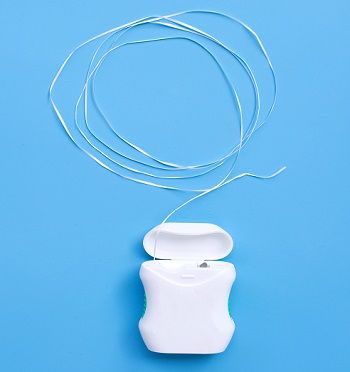Clear Braces and Oral Health: Preventing Gum Disease and Tooth Decay
Dr. Hoss Abar
Maintaining good oral health is crucial, especially when undergoing orthodontic treatment. Clear braces have become popular for individuals seeking a straighter smile without compromising appearance. Clear braces offer a discreet and aesthetically pleasing alternative to traditional braces. However, it is essential to understand the importance of oral health during orthodontic treatment, particularly in preventing gum disease and tooth decay.
Understanding Gum Disease
Gum or periodontal disease is a common oral health condition affecting the gums and supporting structures around the teeth.
Gum disease typically starts with gingivitis, characterized by inflammation of the gums. Common signs of gingivitis include redness, swelling, tenderness, and bleeding during brushing or flossing. Gingivitis can worsen into periodontitis if not treated, which is a more severe type of gum disease.
Several factors contribute to the development of gum disease:
- Poor oral hygiene
- Plaque buildup
- Hormonal changes
- Certain medications
- Genetic predisposition
- Systemic health conditions such as diabetes
When orthodontic treatment is involved, additional challenges can arise due to braces, making cleaning the teeth and gums more difficult.
Orthodontic treatment with clear braces presents unique advantages in maintaining gum health. Unlike traditional braces, clear braces are made to be removable, allowing easier access to clean teeth and gums thoroughly. This reduces the risk of plaque accumulation, a major contributor to gum disease.
Proper oral hygiene practices prevent and manage gum disease during clear braces treatment. Regular and thorough brushing, flossing, and interdental cleaning are essential. Choosing the right oral care products and following a balanced diet supporting gum health is also important.
Regular dental check-ups are vital to monitor gum health and address any issues promptly. Your orthodontist and dentist can work together to develop a comprehensive oral care plan that suits your specific needs, ensuring that your gums remain healthy throughout your clear braces journey.
Tooth Decay and Orthodontic Treatment
Orthodontic treatment, including clear braces, aims to align teeth and create a beautiful, straight smile. While the primary focus is on improving dental aesthetics and function, addressing the potential risk of tooth decay during orthodontic treatment is essential.
Tooth decay, also known as cavities, is a common dental problem caused by a combination of factors, including plaque buildup, bacteria in the mouth, and a diet high in sugary or acidic foods. When braces are involved, there are additional challenges in maintaining good oral hygiene, making it even more crucial to be proactive in preventing tooth decay.
Braces can create small spaces and nooks where food particles and plaque can accumulate, whether traditional or clear. These areas are more difficult to clean thoroughly, increasing the risk of bacterial growth and acid formation, which can lead to enamel erosion and cavities.
Maintaining Good Oral Hygiene with Clear Braces
While clear braces offer a discreet and aesthetically pleasing option, it's important to be diligent in your routine to prevent gum disease, tooth decay, and enamel erosion. Following are some valuable tips for maintaining good oral hygiene with clear braces:

- Brushing Technique: Brush your teeth thoroughly at least twice daily for at least two minutes each time. Pay close attention to cleaning around the brackets and wires of your clear braces. Use a soft-bristled toothbrush to remove plaque and food particles effectively.
- Interdental Cleaning: Besides brushing, interdental cleaning is crucial for reaching areas your toothbrush may not easily access. Consider using a floss threader or specialized floss designed for braces to make the process more manageable. Interdental brushes or water flossers can also be beneficial in cleaning between the brackets and wires.
- Orthodontic Wax: If your clear braces cause irritation or discomfort, apply orthodontic wax to the areas where the braces rub against the soft tissues of your mouth. This can help prevent sores and make wearing braces more comfortable.
- Proper Oral Care Products: Choose oral care products for orthodontic patients. Look for a toothpaste with fluoride to strengthen the enamel and a toothbrush with a small head and soft bristles to clean around the braces effectively. Consider using an antibacterial mouthwash to help reduce the risk of gum disease.
- Orthodontic Check-ups: Regularly scheduled appointments with your orthodontist are crucial for monitoring your treatment progress. During these visits, your orthodontist can assess your oral health, adjust your clear braces if necessary, and guide you on maintaining good oral hygiene.
- Healthy Dietary Choices: Avoid sticky, hard, or chewy foods that can damage the braces. Limit consumption of sugary and acidic foods, as they can increase the chances of tooth decay and enamel erosion. Opt for a well-balanced diet that supports good oral health.
Additional Tools and Techniques for Oral Hygiene with Clear Braces
Maintaining good oral hygiene with clear braces can be aided by incorporating additional tools and techniques into your daily routine. These tools are designed to help clean around the brackets and wires of your braces more effectively, ensuring optimal oral health. Here are some additional tools and techniques to consider:

- Floss Threaders: Floss threaders are thin, flexible tools that help thread dental floss under the wires of your braces. They make it easier to navigate the floss around the brackets and access the spaces between your teeth. Thread the floss through the threader, then guide it under the wires to floss as usual.
- Water Flossers: Water flossers, also known as oral irrigators, use water to clean between the teeth and around the braces. They are particularly helpful for individuals who find traditional flossing challenging. Aim the water flosser at a 45-degree angle towards the gum line, and move it along the gum line and between the teeth to remove plaque and debris.
- Interdental Brushes: Interdental brushes are small brushes with cone-shaped or cylindrical heads. They can be inserted between the teeth and brackets to clean hard-to-reach areas. Gently move the brush back and forth, cleaning both sides of each bracket.
- Antimicrobial Mouth Rinses: Antimicrobial mouth rinses can be used as an additional step to help reduce bacteria in your mouth and prevent gum disease. Look for mouthwashes specifically formulated for orthodontic patients and follow the instructions provided.
Professional Dental Care During Orthodontic Treatment
Professional dental care is vital to maintaining oral health, especially when undergoing orthodontic treatment with clear braces. Regular check-ups with your dentist are essential to check your oral health, address any concerns, and ensure that your teeth and gums remain in optimal condition throughout your orthodontic journey. Here's why professional dental care is essential and what you can expect during your visits:
- Monitoring Oral Health: Regular dental check-ups allow your dentist to assess the progress of your orthodontic treatment and monitor the overall health of your teeth and gums. They can identify potential issues early on and take appropriate measures to prevent complications.
- Professional Cleanings: During dental visits, your dentist or dental hygienist will perform professional cleanings to remove plaque, tartar, and stains from your teeth. This is especially important during orthodontic treatment, as braces can create additional spaces where plaque and food particles accumulate.
- Gum Health Evaluation: Your dentist will examine your gum health to check for gum disease or inflammation signs. Orthodontic treatment can sometimes make the gums more susceptible to infection, so it's crucial to monitor and address gum issues promptly.
- X-rays and Imaging: X-rays or other imaging techniques may be used periodically to assess the underlying structures of your teeth, such as the roots and bone. These images provide valuable information to ensure your teeth and supporting structures remain healthy throughout orthodontic treatment.
- Adjustments and Maintenance: If necessary, your dentist may adjust your clear braces during your dental visits to ensure they continue aligning your teeth properly. They will also guide how to maintain your braces and address any concerns or discomfort you may have.
- Oral Hygiene Education: Your dental team will provide personalized advice and education on maintaining good oral hygiene while wearing clear braces. They can demonstrate proper brushing and flossing techniques. Moreover, they can recommend oral care products suitable for orthodontic patients and address any questions or concerns you may have.
- Collaboration with Orthodontist: Your dentist and orthodontist may collaborate and communicate to coordinate your dental care and orthodontic treatment.
Conclusion
In conclusion, maintaining good oral hygiene and monitoring gum health and tooth decay are essential aspects of orthodontic treatment with clear braces. Clear braces offer a discreet and aesthetically pleasing option for straightening teeth, but they require extra diligence in oral care to prevent complications such as gum disease and tooth decay.
By following the advice and recommendations of your dental professionals, practicing good oral hygiene habits, and attending regular dental check-ups, you can safeguard your oral health throughout your clear braces journey. The result will be a beautiful, straight smile and healthy teeth and gums.
Remember, your dental professionals support you and provide personalized guidance. Don't hesitate to communicate any concerns or seek their advice whenever needed. You can achieve a successful orthodontic outcome with proper monitoring and care while maintaining excellent oral health.
Contact your Pinole dentist, Dr. Hoss Abar, DDS, MSD at Abar Orthodontics, to learn more about Clear Braces and Oral Health and how to Prevent Gum Disease and Tooth Decay.
Resource:
*This media/content or any other on this website does not prescribe, recommend, or prevent any treatment or procedure. Therefore, we highly recommend that you get the advice of a qualified dentist or other medical practitioners regarding your specific dental condition*
More To Explore
About Us
We believe that every patient deserves to feel confident about their smile. Years of experience creating beautiful and flawless smiles.
© 2024Abar Orthodontics | All rights reserved | Powered by:Vigorant, Inc.
